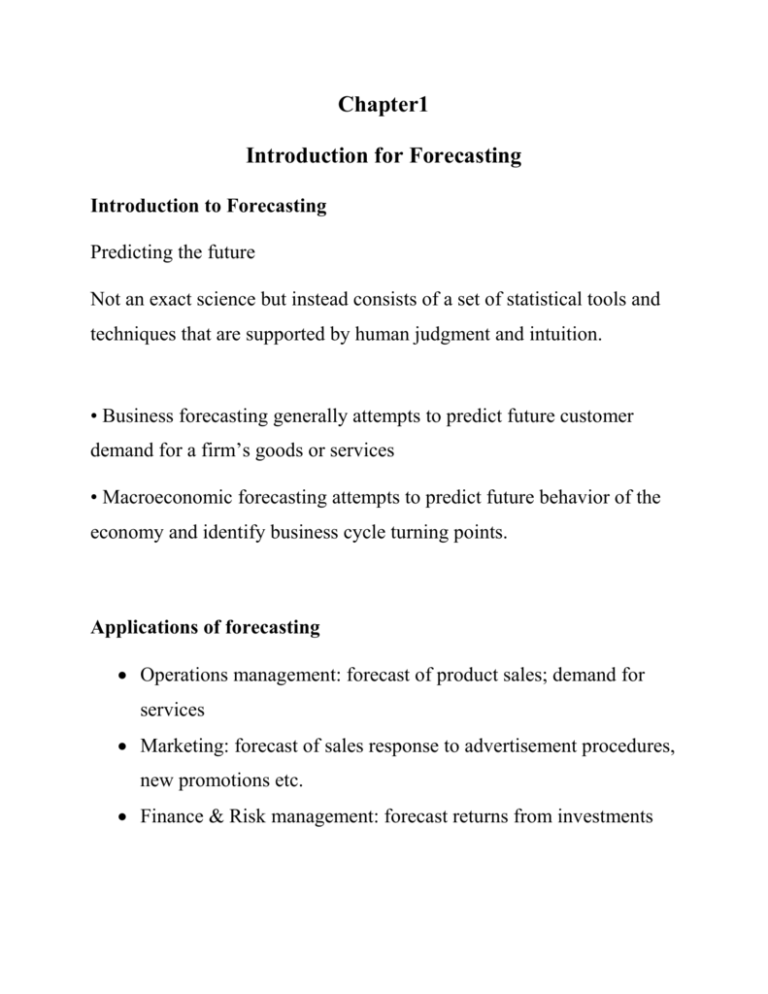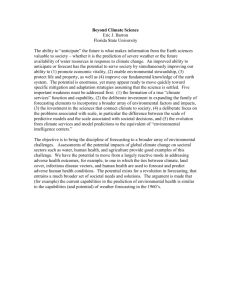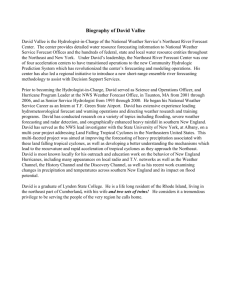Forecasting Chapter 1
advertisement

Chapter1 Introduction for Forecasting Introduction to Forecasting Predicting the future Not an exact science but instead consists of a set of statistical tools and techniques that are supported by human judgment and intuition. • Business forecasting generally attempts to predict future customer demand for a firm’s goods or services • Macroeconomic forecasting attempts to predict future behavior of the economy and identify business cycle turning points. Applications of forecasting Operations management: forecast of product sales; demand for services Marketing: forecast of sales response to advertisement procedures, new promotions etc. Finance & Risk management: forecast returns from investments Economics: forecast of major economic variables, e.g. GDP, population growth, unemployment rates, inflation; useful for monetary & fiscal policy; budgeting plans & decisions Industrial Process Control: forecasts of the quality characteristics of a production process Demography: forecast of population; of demographic events (deaths, births, migration); useful for policy planning Forecast Methods two types of forecasting methods: Qualitative methods are based on: -judgment -opinion -past experience -best guesses Qualitative Techniques • Delphi method (technological forecasting) • Market research • Panel of consensus (CEFC in Maine) • Visionary forecasts • Historical analogies Useful for long forecast horizons and/or when the amount of historical data is limited. Quantitative [Statistical] Techniques Stochastic methods including: summary statistics; moving averages; exponential smoothing; time series decomposition; regression models; trend projections; Box-Jenkins methodology. Make use of historical data & of a forecasting model. The three most widely used forecasting models : -time series -Smoothing models - regression











